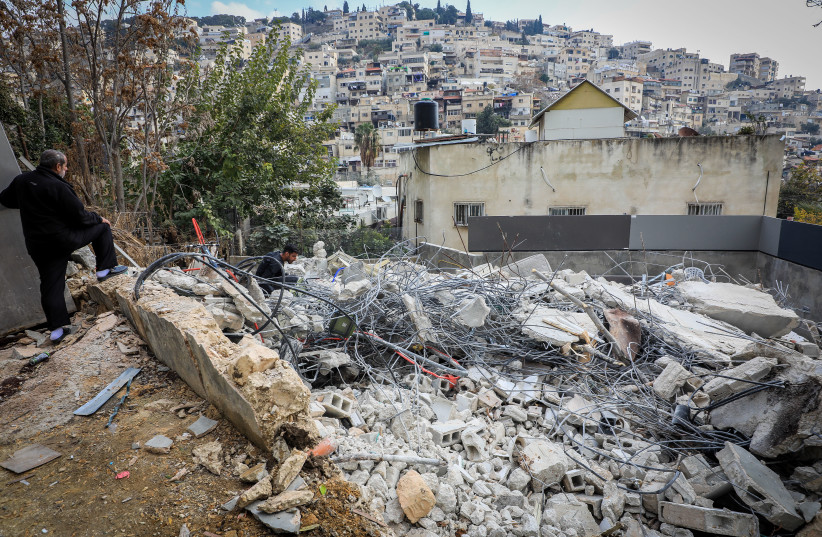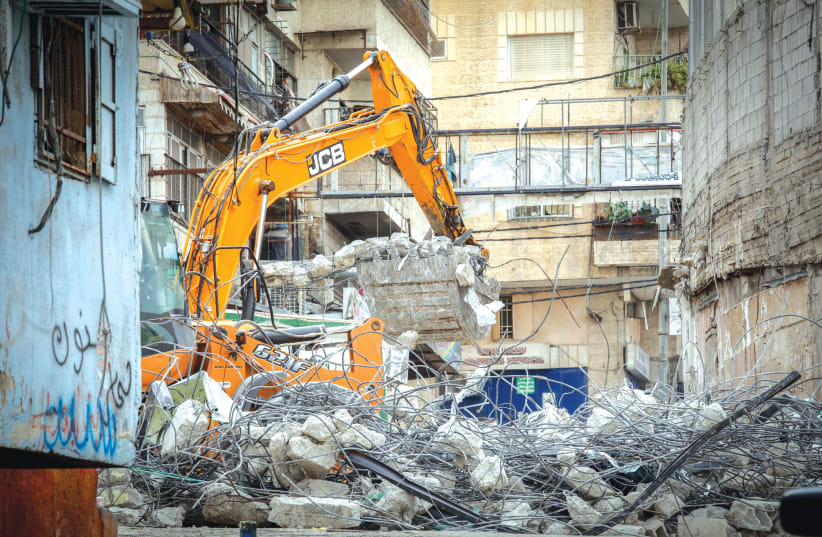I live in Kiryat Hayovel in southwestern Jerusalem. I have been told that there are more urban renewal projects (removal of residents – demolition – construction – reoccupation) than in any other place in the country.
According to reports, the population of Kiryat Hayovel will double in the coming years. This is the way a city should develop, on the condition that in addition to building up (rather than out across open spaces), infrastructure must be included in the plans to accommodate all of the newcomers. That means roads, public transportation, commercial facilities, leisure-time facilities such as sports fields, community centers, health care centers, schools, parks and open spaces and, of course, parking spaces.
Some of these are also being developed in my neighborhood, but I doubt if enough of that is being done. There is construction going on wherever you look. The prices for the new apartments are sky high and I wonder who will be able to afford to purchase them. I don’t see nearly enough new housing being built on the basis of long-term rentals.
With the cost of the new apartments being so high, it is clear that there is no problem finding developers who are anxious to enter the market to take on these mega-projects we see all around the neighborhood. In general, the urban renewal is good because it is removing the ugly Stalinist buildings that were constructed in the 1950s when there was a need for thousands of new apartments for new arrivals, mostly from North Africa.
We all know that these massive apartment blocks turned into the center of urban poverty, and, today, almost 70 years later, they are ugly patches of sub-standard housing that we see in every town all around the country.


Urban renewal schemes, which guarantee apartment owners and long-term renters the opportunity to receive modern, larger and more aesthetic housing with little or no cost to them, is the right thing to do in our cities. As long as these schemes are not aimed at classic gentrification, which removes the poor inner-city residents in favor of new rich segments of the population, such as is happening in Jaffa, where the city’s Palestinian population is being replaced by young, wealthy Israeli Jews.
In east Jerusalem there are no current plans for urban renewal projects. It is difficult to engage in urban renewal projects in a place where there was no urban planning to begin with. More than 54 years after Israel annexed east Jerusalem to become part of the unified, undivided capital of the State of Israel, nearly 40% of the city’s population, who are Palestinians, have almost no zoning plans that enable them to build their homes legally.
In 1967, after the annexation of east Jerusalem and tens of villages surrounding Jerusalem, the number of Palestinian residents of the city was about 66,000. Today there are more than 350,000 Palestinians in Israel’s capital city. Every year the State of Israel and the Jerusalem Municipality demolish the homes of hundreds of Palestinians in east Jerusalem. The homes are demolished because they were built without the proper licenses and permits. But it is almost impossible to build legally in east Jerusalem because there are almost no approved urban zoning plans.
One of the big problems of zoning the area is that most of the privately owned land is not registered in the Israeli Land Registry. Before 1967, Jordan began the process of registering all privately owned land in east Jerusalem. By June 1967 they had only just begun the process. Israel did not continue it after 1967. In addition to simply not registering the land, Israeli law confounded the problem, making it almost impossible to register the land if one of the owners or inheritors of the land was considered “absentee” – meaning not physically present in 1967.
This law was extended from Israel to east Jerusalem after the annexation in order to make it easier for Israel to expropriate Palestinian property and hand it over the Jewish Israelis. The lack of urban planning and the inability to register land has created the reality in which Palestinians in east Jerusalem have little choice but to build illegally in east Jerusalem.
Thousands of homes housing many thousands of Palestinians face demolition orders, and the threat of becoming homeless in their own city is literally a nightmare for many of the residents of Israel’s capital.
A new process of urban renewal in east Jerusalem needs to take place. This needs to be launched by the Jerusalem Municipality, and the first task at hand is to convince the Palestinian population that the intention of the program is to build legal, licensed housing with proper infrastructure, which could also enable the land and homeowners to profit from the assets that they own.
Many Palestinians will believe that the intention of the municipality and of Israel is to vacate them from their homes in order to further Judaize the area. Their suspicions are completely justified based on the actions of the state and the municipality for many years. The lack of urban planning is just one of the mechanisms that has been used to compel Palestinians to leave the city of Jerusalem.
Urban renewal plans for Palestinians in east Jerusalem must begin with the freezing of existing demolition orders in the designated areas. Residents would receive notification that the city is entering into a process of urban renewal with and for the benefit of the residents.
Community organizers, urban planners and architects would launch a series of discussions with the residents of the designated areas and come up with proposals that would include the design of new housing, the development of infrastructure and a timeline for implementation. Once basic plans are developed and guidelines for development are adopted, developers would be invited to submit offers for the projects.
Existing residents would receive legal housing options proportionate to the size of their existing homes. They would have to pay the normal taxes and permit fees that they would have had to pay for their existing structures. The developers will be granted generous building permits allowing them to exploit the land area in order to build buildings that would enable profit for the developers and for the landowners.
Where possible, the municipality would allow for the urban renewal process to be reversed from demolition-building-occupation to building-occupation-demolition so that existing structures would be demolished only in the final stages of the process.
This is because the availability of temporary housing in east Jerusalem does not exist, so people would be allowed to stay in their own homes until the new homes are completed. This would also create a lot more trust in the process. The process of urban renewal in east Jerusalem, which would freeze demolition and enable the construction of modern legal housing with proper infrastructures, would radically change and improve the lives of thousands of Palestinians.
The writer is a political and social entrepreneur who has dedicated his life to the State of Israel and to peace between Israel and her neighbors. He is now directing The Holy Land Bond.
